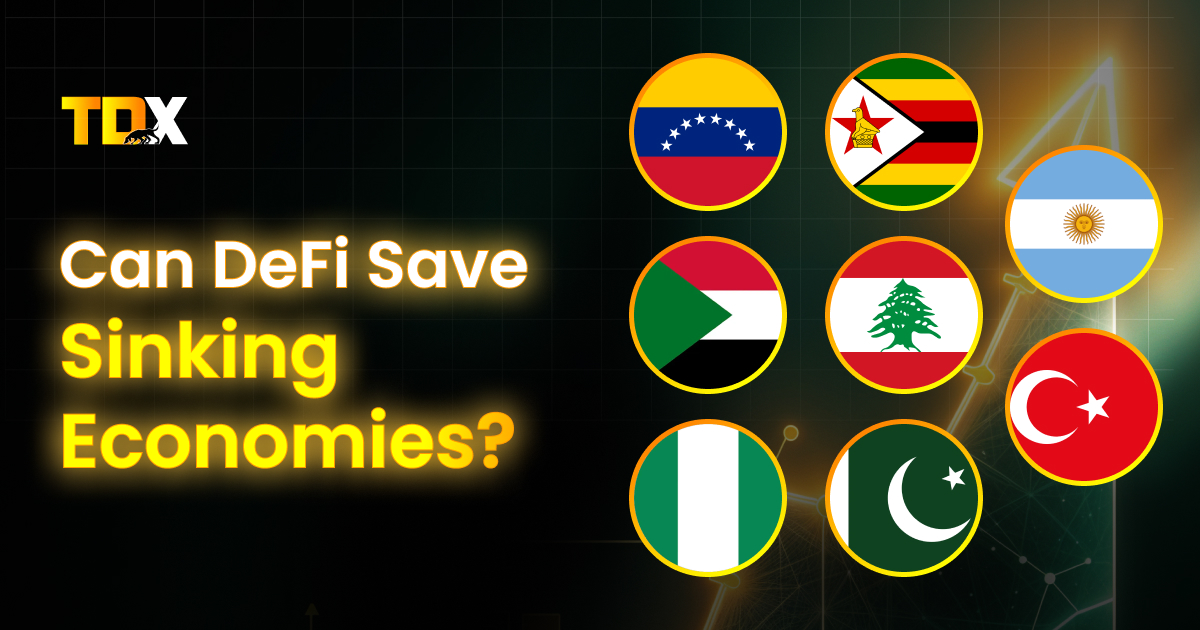




Navigating the Challenges and Opportunities in Tokenized Asset Markets Reaching $10 Trillion by 2030
The world of finance is undergoing a profound transformation, with tokenized asset markets playing a pivotal role in this shift. Tokenized assets, essentially digital representations of real-world assets like real estate, commodities, and securities on a blockchain, are opening new doors for investors by increasing accessibility and liquidity.
This innovative approach enables fractional ownership, and it allows a more diverse range of investors to participate in markets traditionally dominated by large institutions. As of 2024, this market is witnessing substantial growth, driven by technological advancements and evolving regulations that are boosting institutional confidence. With projections suggesting a valuation of $10 trillion by 2030, tokenized assets are poised to offer significant opportunities for diversification and efficiency.
This article will explore both the challenges and the potential of a market on the brink of exponential growth. Want to find out more? Read on!
Understanding Tokenization
Tokenization transforms ownership rights of an asset into digital tokens on a blockchain, utilizing the technology to ensure security and transparency in transactions. This system makes it possible for assets to become more accessible, allowing a broader range of investors to participate in markets previously limited to larger players.
Various categories of tokenized assets exist. In real estate, fractional ownership in properties is now possible, making the market more inclusive. Commodities like gold and oil can be tokenized, improving liquidity and simplifying the trading process. Securities, including stocks and bonds, are also being transformed through tokenization, potentially streamlining operations and reducing costs.


As of 2024, the tokenization industry is expanding rapidly, supported by advancements in blockchain technology and growing regulatory acceptance. These changes are expected to further integrate tokenized assets into the global financial system, fostering a more efficient market environment.
Market Drivers
Several factors are significantly influencing the evolution of tokenization and blockchain technology.
Technological Advancements
Improvements in blockchain technology, particularly in the realm of smart contracts, are driving market growth. Smart contracts enhance transaction security and efficiency by minimizing the need for intermediaries. Advancements in blockchain scalability and interoperability are leading to more robust platforms that can support a diverse array of tokenized assets, thereby drawing more participants to the market.
Regulatory Developments
Evolving regulations are crucial in shaping the expansion and development of the tokenization market. Globally, governments are increasingly recognizing the potential of blockchain technologies and are devising frameworks that promote innovation while safeguarding investors. These regulatory changes build market confidence by providing clearer guidelines and reducing uncertainties, which, in turn, encourage institutional investment.
Investor Demand
There is a growing interest among investors in diversified portfolios and fractional ownership, driven by the desire to access a wider variety of asset classes. Tokenization facilitates fractional ownership in traditionally inaccessible assets, such as real estate and commodities, broadening investment opportunities. This demand is further amplified by the increasing financial literacy and technological engagement of retail investors.
Challenges in Tokenized Asset Markets
Navigating the tokenized asset markets presents a unique set of challenges that stakeholders must address to ensure sustainable growth and investor confidence.
Regulatory Hurdles
Tokenized assets face significant obstacles due to regulatory challenges, highlighting the urgent need for comprehensive global standards. The absence of uniform regulations across jurisdictions creates uncertainty and poses compliance difficulties for market participants.
Key international bodies, such as the Financial Stability Board (FSB) and the International Organization of Securities Commissions (IOSCO), are actively working to establish frameworks that promote consistency and transparency in the regulation of tokenized assets. The coordinated efforts of these organizations are crucial in fostering a stable and secure market environment.


Security Concerns
Security remains a paramount concern in tokenized asset markets, as the digital nature of these assets makes them particularly vulnerable to cybersecurity threats and fraud. Recent incidents of hacking and unauthorized access underscore the need for robust security measures to protect investors and maintain trust in the system.
Companies are increasingly investing in advanced cybersecurity protocols and fraud prevention strategies to safeguard their platforms. Ensuring the integrity and security of tokenized transactions is essential for the long-term viability of these markets.
Market Volatility
Tokenized markets are characterized by notable volatility and liquidity challenges, which can deter potential investors and hinder market stability. These emerging markets experience price volatility and limited liquidity, which makes it challenging for investors to buy or sell without significantly affecting prices.
Monitoring recent market trends and leveraging expert analyses can provide valuable insights into managing these challenges. Economic forums and financial publications often offer in-depth discussions on strategies to mitigate volatility and enhance liquidity in tokenized asset markets.


Opportunities for Growth
As you can already see, the world of tokenization is buzzing with lots of opportunities, especially for new market players and startups eager to shake things up. This digital revolution is opening doors by turning high-value assets into accessible digital tokens, inviting investors of all sizes to the party. Startups can ride this wave, crafting innovative solutions that break down investment barriers and offer a buffet of diversified portfolios to a broader audience.
Trailblazing Financial Products
Tokenization is revolutionizing asset management. It transforms how we interact with investments. This trend is leading to markets that are more liquid and efficient. Innovative financial products, such as tokenized bonds and real estate, are capturing interest due to their flexibility and ease of access. With the integration of smart contracts, transactions are rapidly becoming faster and more cost-effective, streamlining the entire financial process and enhancing user experience.
Expanding Global Horizons
A truly thrilling aspect of tokenization is its ability to smash through geographic barriers, creating a seamless global investment arena. Investors can now trade assets worldwide with unprecedented ease, thanks to the security and transparency of blockchain technology. As regulatory environments catch up, tokenization is primed to fuel a vibrant and inclusive global economy, and this invites participation from every corner of the world.
With that in mind, we can conclude that tokenization is not just reshaping finance; it’s unlocking thrilling new growth avenues, and that sets the stage for an exciting and inclusive financial future.


Case Studies and Real-World Examples
Successful Implementations
Tokenization is reshaping industries, with standout projects showcasing its transformative impact. Ondo Finance is leading the charge by making fixed-income assets more accessible, bridging the gap between traditional finance and DeFi. Their work with US Treasuries, alongside BlackRock’s BUIDL fund, highlights how increased liquidity and accessibility are attracting significant interest and investment.
In real estate, Lofty is changing the game, allowing small investors to own fractional shares in rental properties. This approach opens up new opportunities for generating rental income and offers investors the flexibility to manage their investments in previously inaccessible markets.
Hong Kong’s Project Ensemble, initiated by the Hong Kong Monetary Authority, is another great example. The project is crafting a seamless financial ecosystem, enhancing transaction efficiency and reducing traditional risks, setting a new standard in the tokenization arena.
Lessons Learned
These initiatives underline vital insights for tokenization’s future. Achieving regulatory harmony is crucial, as early engagement with regulators ensures smoother project execution. Security stands out as a top priority, with robust protections necessary to safeguard digital assets and maintain trust.
Educating users and promoting transparency have proven essential. Successful initiatives often focus on investor education, fostering trust and understanding in the tokenization process. Moreover, the collaboration between established financial institutions and tech innovators is a significant factor, blending traditional and digital financial realms effectively.
These examples demonstrate tokenization’s vast potential to revolutionize industries, enhancing access, efficiency, and security, and paving the way for sustained growth and innovation.


Future Outlook
Predictions for 2030
The future of the tokenized asset market presents a mixed yet promising scenario. Chainlink projects rapid growth, suggesting the market could reach a staggering $10 trillion by 2030. This optimistic outlook is fueled by increasing institutional adoption and regulatory support, which are expected to drive tokenization across various asset classes, including real estate and private equity.
Conversely, McKinsey offers a more cautious forecast, estimating the market will reach around $2 trillion, highlighting slower adoption rates and the gradual integration of blockchain technologies into existing financial systems.
Potential Challenges and Opportunities
The path to widespread tokenization is not without hurdles. Major challenges include regulatory uncertainties, technical complexities, and the need for robust security measures to protect digital assets. Additionally, the market must overcome the ‘cold start’ problem, where initial adoption is slow due to limited liquidity and market infrastructure.
Despite these challenges, the opportunities are vast. The tokenization of traditionally illiquid assets can unlock significant liquidity, providing investors with new avenues for diversification and yield generation. The integration of blockchain can also enhance transparency and efficiency in financial transactions, paving the way for innovative financial products and services.
Strategic Recommendations
To navigate this evolving landscape, strategic actions are essential for investors, companies, and regulators:
- For Investors:
Diversification into tokenized assets could offer new growth opportunities. Investors should educate themselves about the risks and benefits of tokenization and consider incorporating these assets into their portfolios to leverage their potential for liquidity and yield. - For Companies:
Businesses should explore tokenization as a means to enhance operational efficiencies and expand market access. Building partnerships with technology providers and engaging with regulators early can facilitate smoother implementation and compliance. - For Regulators:
Developing clear regulatory frameworks will be crucial to fostering a conducive environment for tokenization. Regulators should collaborate with industry stakeholders to address compliance challenges and support innovations that enhance market stability and transparency.
Together, these strategies can help stakeholders capitalize on the transformative potential of tokenization, setting the stage for its integration into the global financial ecosystem by 2030.


Conclusion
Tokenization stands on the brink of transforming global financial markets, ushering in a new era of opportunity and efficiency across various sectors. Real-world successes illustrate its revolutionary potential for asset management, while future projections present a range of possibilities from ambitious growth to more prudent forecasts.
The path to widespread acceptance is challenged by regulatory and technical obstacles, yet the call for proactive engagement remains strong. Investors, companies, and regulators are encouraged to collaborate and innovate, ensuring they tap into tokenization’s full potential. By tackling these challenges head-on, stakeholders can unlock unprecedented liquidity, transparency, and innovation, reshaping the financial ecosystem for the better.
40,000 readers 🚀 are getting insights with our media





Article
“Is Ethereum dead?” This is a trending argument that is appearing in various crypto communities and media. Which is not…






Guide
Welcome to the beginner’s guide on Trust Wallet, MetaMask, and Exodus—three most common cryptocurrency wallets for managing your crypto assets….






Article
When Venezuela’s inflation hit 189.8% in 2023 [Central Bank of Venezuela, 2023], Maria’s life savings of 200 million bolivars (enough…






Article
For generations, Indians have trusted one investment: fixed deposits (FDs). If you walk into any Indian household, chances are someone…






